
Laguarta

Pictures: 10.iv.2007, 31.v.2023


Pictures: 10.iv.2007, 31.v.2023
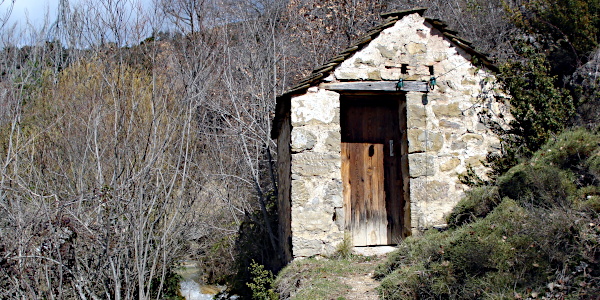
Some people even played with the idea of a reopening of the albergue which was closed many years ago precisely because there was no electricity. But from now on it should be possible to lure at least some tourists to the village.
Up until 2006 electricity came from this humble building (1) which at the time of our first visit had
Central
painted on its door. Two lines, just above a man's height (4), run to the nearest house and provided barely enough energy to make it possible to leave the home during dark winter nights
, states a newspaper article relating the inauguration.
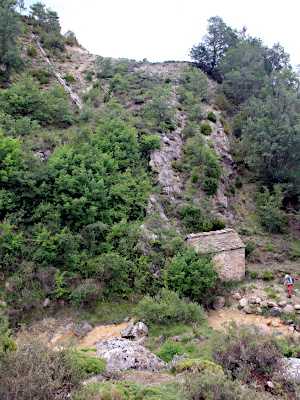
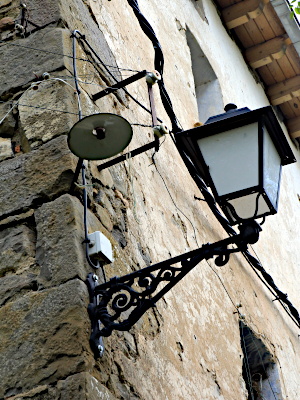
It all started in 1914 when Mr. Juan Urrutia Zulueta was visiting Laguarta, and stayed at Casa Cudillo. He was the representative of the company (#). His visit was about the construction of a high voltage line which would connect the projected hydroelectric power plants of the Cinca River basin with the industrial zone of Bilbao, which was in full development and would soon need cheap electricity. The distance to cover was more than 400 km: a challenge for the time (¥). The best path for this line passed through Laguarta, and therefore prior authorization from the affected owners was required.
The project was explained during a meeting in Casa Cudillo (home of Mr. José Villacampa). It was difficult to convey what electricity exactly was, because at that time people knew only about candles, torches, or oil lamps. But a demonstration was given with a dynamo mounted in a wooden box complemented with two light bulbs and it was an afternoon full of wonder for the people present, who formed the Society of Owners in Laguarta.
The Society of Owners of Laguarta explained that there was no problem to place the poles and facilities in the fields
and mountains of the village. However as compensation they also wanted the so-called bujías
(light bulbs)
in their houses to light up the night. However, this was not feasible, they were told, the costs would be too heavy.
The members present failed to understand how people in Bilbao would enjoy lighting and not the people in Laguarta. After several negotiations, in which Mr. Villacampa mediated, an agreement was reached. Hidroeléctrica would design a small hydroelectric power plant for the locality and they would also help with the purchase of materials. The Society of Owners of Laguarta would provide labor and make up for the rest of the cost.
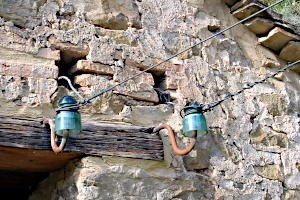

To make execution of the plan possible, several things where agreed upon:
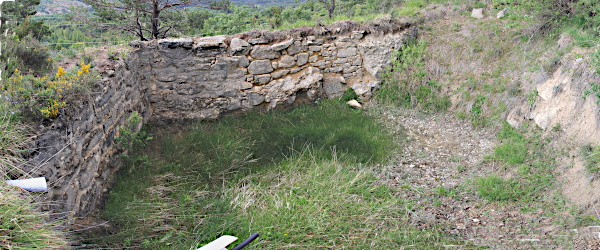
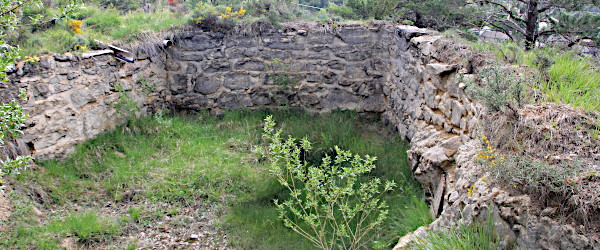
The mill pond consisted (just like today) of a stone wall about 8 m tall, oriented to the south. It counts two outlets. One is the overflow drain (6, 7) at the top of the wall. The other is situated 1 m above the bottom (currently at the bottom): it is the intake for the pressure pipe (8).
The water supply for the mill is integrated in the irrigation system. The pond is filled during the day and at night this volume is used to produce electricity. The overflow, once the pond is full, is then used for irrigation. There was a connection with the ditch for irrigation, which came from the source of the river Guarga, about 800 m away from the pond. Nowadays this ditch belongs to the municipal council and feeds the deposit for the drinking water of Laguarta. The connection between both systems is severed.
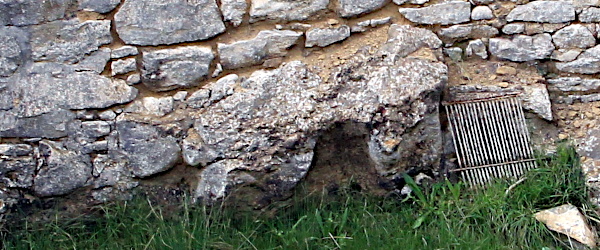
Ebro 125(§)
The electric generator was a model from the AEG factory brought from Germany. The generator ran at 1400 revolutions/minute and originally generated 230 V, which at 16.5 A gave a power of 3.8 kW. The original voltage was transformed down to 150/125 V at the output. The regulator allowed a maximum output of 150 V, which dropped to 125 V in the houses due to the resistance of the unprotected copper line.
The entire system counted 100 light bulbs in the village, plus 2 in the power station itself. In the initial layout of 1918, Casa Cudillo and Casa Lorente had an allowance of 12 bulbs each (in accordance of the agreement) and the rest of the houses of owners each 5. Leaving a total of 16 light points for those who were not from the Society (i.e. the school, baracks of the Guardia Civil, the abbey, …). This configuration would change over time due to changes in the requirements (f.e. more light bulbs, public lighting) (✠).
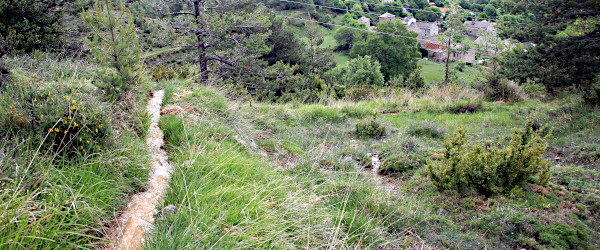
Around 9:00 p.m., the grid was officially connected and as a demonstration people were allowed to light 4 bulbs per house. A test carried out some days earlier had shown that if more than 100 bulbs were switched on then the fuses of the central would blow.
Eventually, to ensure correct operation, a fuse was installed in each house, which would jump if all bulbs in that house were switched on at the same time. In Casa de Cudillo and Lorente the limit was 400 W, in the rest of the 12 houses 150 W and in the others 100 W each (¶). Which added up to a maximum theoretical power of 3.1 kW.
But many times there were problems and the system need continual adjustment, because there was not enough water to reach the maximum possible production. With the pond full and a maximum consumption of 2.5 kW, there was in principle enough water for four hours of lighting. Then, if there was a need for more, the irrigation water could be redirected. This meant that in winter there was electricity until 10 in the night and in summer until 12 at night, all depending the amount of water available.
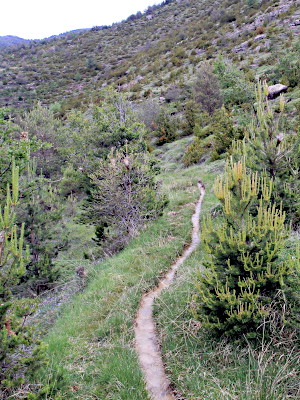

In 2018, the installations were heavily damaged as a result of work on the high-voltage line. At the time of writing, the system is still unusable. How ironic, and regrettable, that the line that gave rise to this exciting venture also marked its end.
What Was Spain's GDP Then ?— MeasuringWorth, 2023 — URL: http://www.measuringworth.org/spaingdp/ — visited on 01.vii.2023
las centrales eléctricas del Altoaragónand gives their capacity in the year 1976. The plant of Laguarta is listed with a power of 8 kW.